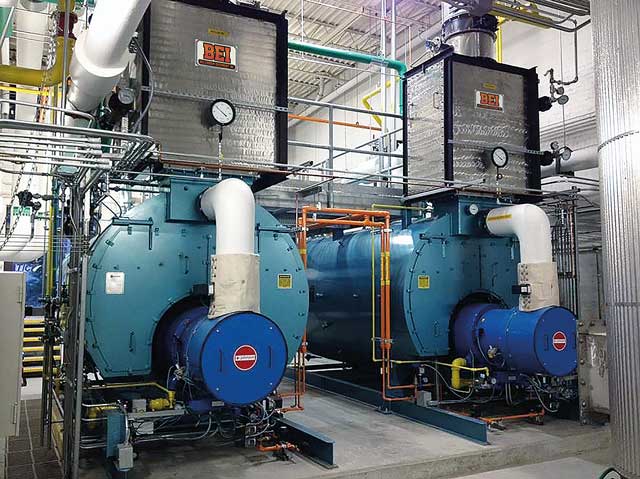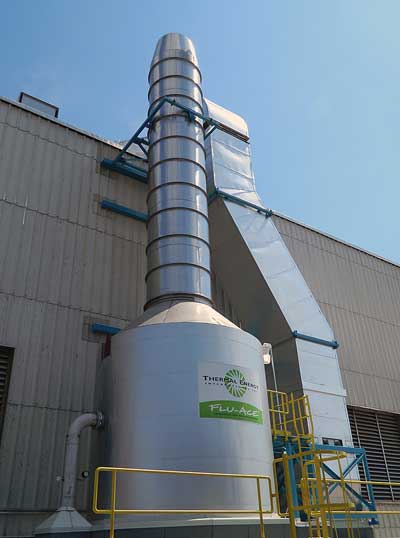
In specifying heat recovery technology, it is important to take into account site-specific considerations and the full lifecycle of a system to decide on the appropriate technology, says Robert Triebe, chief operating officer and heat recovery expert at Thermal Energy International.

Broken down or unused heat recovery systems are more common than they should be, and bypassed leaking feedwater economisers are a regular sight in boiler plants. With the payback or return on investment of such units usually depending on continuous long-term operation, those specifying and installing a heat recovery system need to account for any maintenance commitments alongside the initial investment, if they are to receive the environmental and economic benefits promised.
Direct and indirect heat recovery
The first step in any heat recovery specification is acknowledging whether your site requires a direct or indirect heat recovery solution. This will depend on how much waste heat is available at your site, and how much waste heat can be used and at what temperature. Indirect contact, non-condensing recovery types such as feedwater economisers have been the most widely used in the market. A heat exchanger is used to transfer heat from the flue gas to preheat boiler feedwater through bare or, more commonly, finned tubes. In general, indirect systems are quick and easy to install. They often “bolt on” in line with an existing system and require less on-site analysis and installation time. As a result, they can have a lower price than other types of systems. However, with reduced costs come reduced savings and reliability.

Many indirect heat recovery units require a higher level of repair and maintenance. This is because of naturally-occurring corrosive substances, such as nitric, carbonic, and sulphuric acid, present because of the condensation and reaction of combustion products.
These corrode the metal, diminishing efficiency and ultimately causing leaks, typically within five years. The complication of pressure code compliant repairs often results in systems being left abandoned in place. Choosing a product with maintenance features built in and with more suitable material selection can help you manage or avoid this.
Wear and tear is to be expected, but suppliers should work towards creating easy-to-maintain solutions. Most importantly in condensing heat recovery systems, high quality, corrosion resistant stainless steel should be used as the main material. Keep in mind product features that improve access to the inside of the unit and make maintenance easier. Finally, where possible, find units with individually replaceable fin tubes, such as Thermal Energy’s HeatSponge products which have removable compression-fit tubes – with no welding required for replacement.
For large complex plants with no tolerance for downtime, economisers can be mounted “out of line”. Boilers and other processes can then continue to operate normally while the heat recovery unit is isolated for maintenance.
The other type of heat recovery is direct contact. This continues to grow in popularity, particularly among sites which require a large amount of low-grade heat for preheating hot water for boiler makeup or domestic heating.
In direct contact, water is sprayed directly on to the hot exhaust gas, condensing and capturing heat which would otherwise be lost. Through this process a larger amount of heat can be recovered than in indirect types, but usually at a lower temperature. In general, this type of heat recovery has a higher customisation and engineering requirement, but can offer up to 30 years’ operation with minimal maintenance.
The dielectric effect
The main reason direct contact units do not degrade in the same way as indirect units is because the acidic droplets formed in the direct system are immediately diluted or neutralised by the water spray.
A second reason is the reduced dielectric effect. Metal that is partly wetted will corrode more quickly than metal that is completely submerged. In a direct contact system surfaces are continuously wetted, and the dielectric effect is minimised or eliminated. As a result, direct contact heat recovery can offer surprisingly long guarantees, such as Thermal Energy’s 10-year Flu-Ace Heat Recovery System commitment.
With heat recovery coming in many different forms, the concept can be applied across the board to improve efficiency, reduce fuel use, and minimise emissions. However, these benefits can only be achieved when a properly selected and designed system is performing optimally.
+44 (0)117 917 7010
www.thermalenergy.com | info@thermalenergy.com

